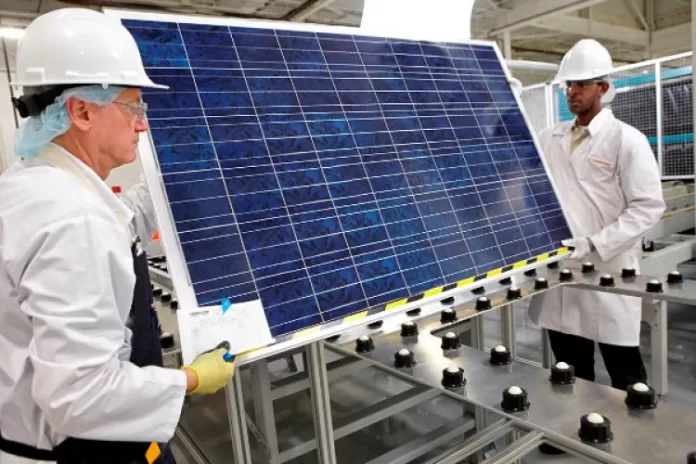The firm, a subsidiary of Canadian Solar and a member of the Solar Module Super League (SMSL), expects to add three phases of vertically integrated, high efficiency wafer, cell, module, and battery storage manufacturing capacity.
The first phase, which is anticipated to enter production in the second part of this year, will increase annual wafer and cell manufacturing capacity by 14GW. Canadian Solar stated that the second and third stages of the deal are subject to modification and did not provide any construction or completion dates.
In light of this statement, Canadian Solar stated that it now anticipates finishing 2023 with 20GW of ingot, 35GW of wafer, and 50GW of cell and module capacity.
The business declared in September a goal of 10GWh of annual battery production capacity by 2024.
Shawn Qu, chairman and chief executive officer of Canadian Solar, stated, “Our capacity additions will further enhance our profitability in an environment of rapidly declining upstream raw material costs, and we are dynamically adjusting our capacity plans to account for a market environment with pockets of large supply and pockets of tight supply relative to demand.”
The business said at the end of last year that it will increase its attention on TOPCon module technology and launch mass manufacturing of the technology in the first quarter of 2023. It predicted that TOPCon will account for around one-third of this year’s module shipments.
Trina Solar, a fellow SMSL member, saw the first of its n-type TOPCon cells roll off the manufacturing line at one of its Chinese sites in the initial days of this year. Recently, PV Tech Premium examined in depth a new LONGi growth plan aiming for 100GW of mono wafer and 50GW of cell manufacturing capacity.
According to a recent BloombergNEF research, 91% of global renewable energy manufacturing investment would move to China by 2022.





